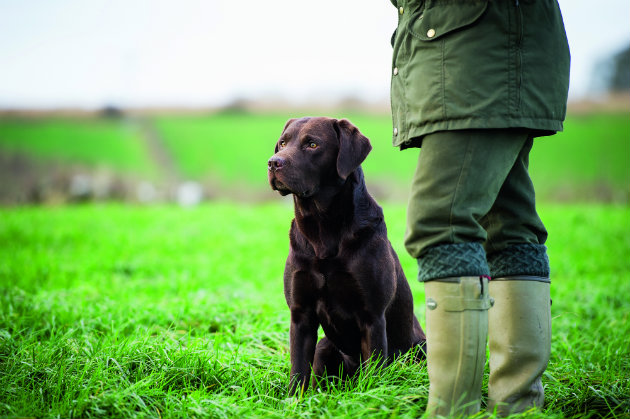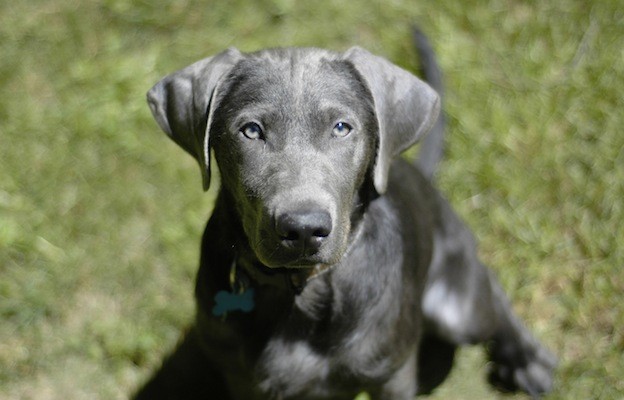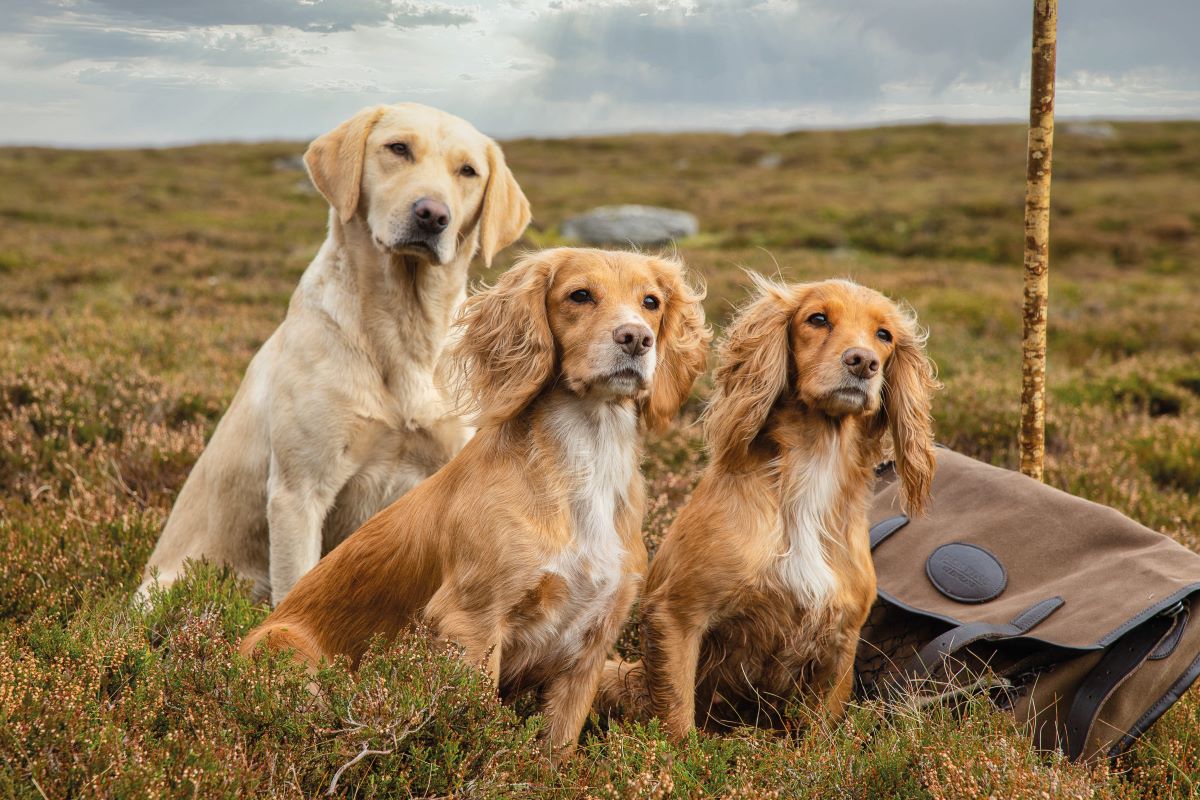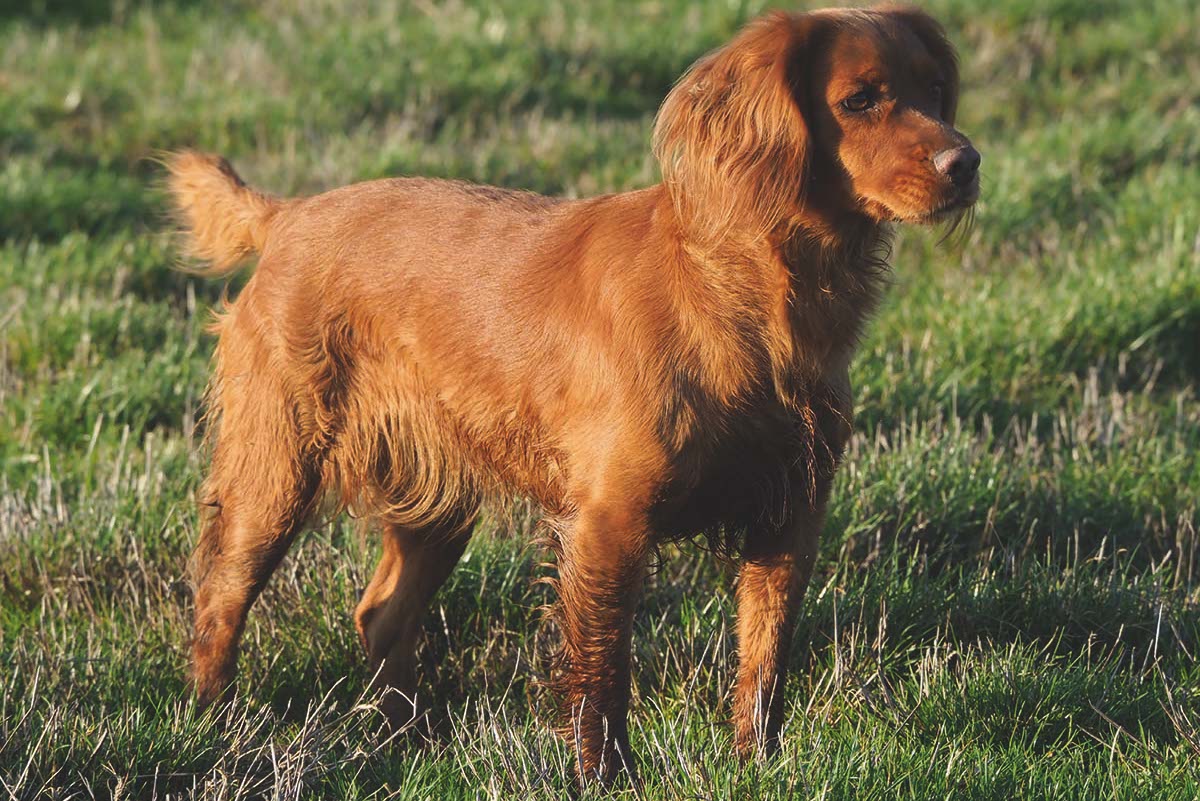Are chocolate Labradors poor retrievers?
Is colour really a factor in gundog ability? Ellena Swift looks at the oft-repeated claim that chocolate Labradors make poor retrievers

A very well-behaved labrador
I was asked recently about my opinion on a dog’s eye colour. The inquirer felt if a Labrador had light-coloured eyes, it was more prone to be skittish and wild.
It was something I had never even considered. I have always preferred a Labrador with darker pigment around their eyes and on their noses. It is more common to see yellows with the lighter pigment, and as I only have blacks at the moment it is not a issue.
Despite sharing the same dam, Briar has slightly lighter eyes than my other dogs. Her drive is undoubtedly flawless and, considering the speed and enthusiasm with which she approaches every task, you could say she is ‘wild’. However, she is unbelievably gentle with my children, very biddable and happily switches off at night time. So I am not convinced her eye colour has made much difference. Her temperament is very similar to her mother and two half-siblings. I feel that perhaps her breeding and environment have had more effect than her eye colour.
This made me think of one of the biggest debates in working gundogs: does one colour work better than another? There is the age-old argument about abilities of the chocolate Labrador. But cocker spaniels have their own colour query. A couple of years ago a woman came training with a beautiful red cocker bitch. The spaniel had aggressive tendencies that certainly stemmed from insecurities rather than straight up aggression — a common find in ‘aggressive’ dogs.
‘Cocker rage’
The owner asked if I felt she could be suffering from ‘cocker rage syndrome’. It was the first I had heard of it and, after thorough research, felt it was not the case for this dog.
However, it was interesting researching this. It was said to be derived from one stud dog that sired many litters and then filtered down through the generations. According to sources it was only found in solid-coloured cockers, and in particular the reds. Dogs rather than bitches were more likely to suffer from it than other colours.
Despite not owning a cocker, I have worked with hundreds. I work with lots now and I work my dogs in many picking-up and beating teams with some very good-natured cockers. In particular I work my dogs alongside two entire red males. Neither shows any aggression whatsoever and they are actually passive when it comes to people and other dogs.
Perhaps there was little truth in the rumour? Or perhaps the genes are now so diluted that we can not see it clearly now. It is no secret that, when working with dogs that display aggressive tendencies, I have commonly laid blame at the handler’s door, or perhaps learned experiences. However, I do acknowledge that nature certainly has a role to play in temperament. Despite this I strongly think that the correct ‘nurture’ can overcome the vast majority of problems bred into dogs.

Red and yellow – is it colour or nature and nurture?
Are chocolate Labradors poor retrievers?
So what about the Labradors — is the chocolate Labrador not as good a working dog as the yellows and blacks? Are chocolate Labradors poor retrievers? This is something which, like the cocker evidence, can be researched and examples shown to support both sides.
I prefer my black Labradors over the other colours. I find them more striking to look at, and more importantly their hair doesn’t show up on the carpet as much. However, I see daily fantastic yellow Labradors working and trialling. I used a fantastic dark yellow Labrador on my own bitch and the result was Keepa.
But what about the chocolates? Evidence to support their working ability isn’t as strong as it could be, sadly. When looking at Guide Dogs For the Blind and Dogs For Good, it is much more common to see the black and yellows being used. There must be a reason for it.
Chocolate winners
They are a much less common sight on the shooting field, as well. After some research I discovered that only three chocolate Labradors have ever qualified for the International Gundog League Retriever Championships and only 12 chocolate dogs have ever won a field trial. You could argue that this is because so few chocolate dogs actually trial. Or is it more than that?
When chocolate Lab first became popular they were largely bred simply for the colour rather than their ability. As yellows and blacks were much more common, their breeding was more focused on their ability and less so on their colour.
As time went on the chocolates lost a lot of their natural working ability, so we saw fewer in the shooting field. It was a vicious cycle. The fewer there were being used, the less were bred for shooting. Thankfully, now there are more beginning to hit the circuit.
In 20 years I can count on one hand the number of chocolate Labradors I have seen on the shooting field that I would happily add to my team. The vast majority were disappointing, to say the least. Despite the obvious flaws in those particular dogs, it was important to look a little deeper.

A well-trained dog. But is it because it’s black?
Inadequate trainers
It soon became glaringly clear that the handlers were not people that I recognised as skilled or even good gundog trainers. When I looked at their other dogs — most of which were different breeds and colours — they were equally inadequate.This strongly suggests that perhaps colour wasn’t the only factor. Fortunately, there are now some trainers and dedicated breeders in the UK who are improving the working lines of the chocolates all the time.
I have encountered one example of these dogs in a competitive environment at an all-aged trial two seasons ago. The trial was all walked-up in woodland and some game cover. However, the terrain was notoriously difficult. The ground was thickly covered with briars and bracken, making even the simplest marked retrieve difficult.
To excel on this ground the dogs had to be fearless, dedicated and show hunting skills more commonly found in a spaniel than a Labrador. In not particularly long, no less than three dogs had been put out as they simply would not heel through this cover. Instead they picked their way around and found easier routes, meaning more often than not they weren’t within two feet of the handler.
My black bitch had a nice marked retrieve across the wood, the sort of retrieve you breathe a sigh of relief about in a trial. She marked it and went out on a good line to the area. Once there I could no longer see her because of the briars. She seemed to take a absolute age to pick it, but on her return it was obvious why — she returned with a bird and a mouth full of briars. Even the simple retrieves were getting caught up in deep thick thorns.
As the dogs reduced in numbers, we got down to the final four dogs. I was called into line with the chocolate Labrador, which I had not been able to watch all day. We set off down the wood and a bird was shot behind the line. Another was then shot in front. I silently hoped that I would be sent for the bird in front, as the one behind had dropped into another absolute bottomless pit of briars.
My little dog had been in and out of them all day, and despite being fearless when it comes to cover — one of my favourite attributes of Nala —
I wanted her to have a nice easy long retrieve out in more open terrain.
As luck would have it the chocolate Lab was sent for the bird behind.
I stood in absolute awe of it. The line it took to the bird couldn’t have been drawn straighter with a ruler. To say is smashed through the cover is a vast understatement. The dog was precise, powerful, marked within inches, fearless and handled beautifully.
Am I taking a risk on a chocolate Labrador?
Is it a gun dog breed worth training?
Do chocolate Labradors deserve a bad reputation?
So how does the colour of a chocolate Labrador happen? A variety of different Labrador matings, including black to black,…
Would a silver Labrador be right for you?
What exactly is the right colour? The Kennel Club’s breed standard states that “any shade of gold or cream” is…
Myth
Watching this dog it became clear the claim that chocolate Labradors make poor workers was a myth — I was looking at the evidence that disproved it. The final outcome had the chocolate dog placed first, with Nala receiving a well-deserved third place. A worthy winner, and a fine example of a gundog that anyone would be proud to add to their team.
In contrast to the majority seen out when shooting however, this dog has a talented and well known trainer-handler. So perhaps that is the difference. Maybe if more of the better handlers-trainers worked with chocolate Labradors, we would start to see them have more of an impact in today’s gundog world. Perhaps that should be my next challenge.












